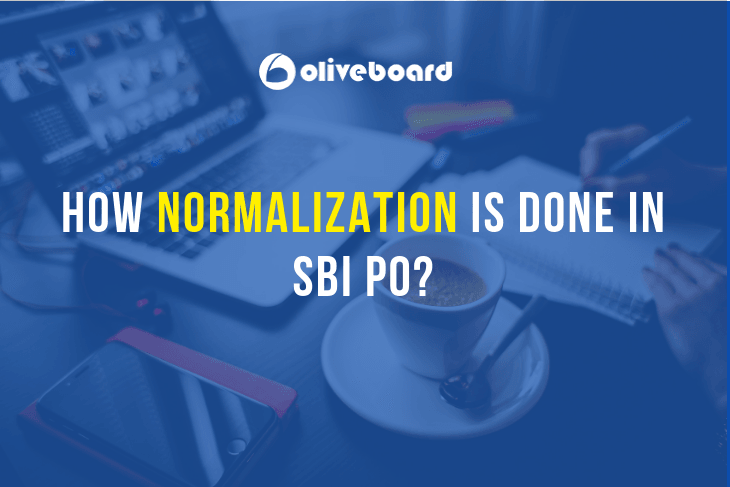Normalization is very common in all banking exams that are conducted today. The SBI (State Bank of India) employs this process to evaluate the candidates’ performance, based on difficulty level and parameters of the entrance exam.
SBI conducts the entrance exam in various slots. The topics, the questions and the sectional cut-off vary for each shift. Despite all your hard work and competitive exam preparation, the questions in one slot may be comparatively difficult from another.
To carry out a fair evaluation, SBI normalizes the marks scored by candidates in various slots of the examination. The aim of the normalization process is to level the playing for candidates across slots.
Here is how normalization is done in SBI PO exams:
Normalization of marks in SBI PO exam is done with the use of Equi-percentile method. The process involves the following steps-
- For each slot of the exam, a percentile rank of the candidate is calculated using the formula:
Candidate’s percentile rank= {(Total number of students in a slot)-(Rank of the candidate in that slot)/ (Total number of students in a slot – 1)} x 100
- A cut-off percentile is determined on the basis of the number of vacant seats
- Shortlisted candidates are called for the next round of the recruitment process, based on the cut-off score
To help you understand the normalization process better, here is a hypothetical example to illustrate the above formula-
Suppose the SBI PO Preliminary examination was held in two slots. Let us say five candidates appeared for the first slot of the examination.
| CANDIDATE’S NAME | MARKS SECURED (OUT OF 50) | CANDIDATE’S RANK IN THE SHIFT | CANDIDATE’S PERCENTILE RANK (USING THE ABOVE FORMULA) |
| A | 49 | 1 | 100% |
| B | 48 | 2 | 75% |
| C | 47 | 3 | 50% |
| D | 46 | 4 | 25% |
| E | 45 | 5 | 0% |
Now, let us say eight candidates appeared for the second shift of the examination.
| CANDIDATE’S NAME | MARKS SECURED (OUT OF 50) | CANDIDATE’S RANK IN THE SHIFT | CANDIDATE’S PERCENTILE RANK (USING THE ABOVE FORMULA) |
| P | 35 | 1 | 100% |
| Q | 34 | 2 | 85.71% |
| R | 32 | 3 | 71.42% |
| S | 31 | 4 | 57.14% |
| T | 29 | 5 | 42.86% |
| U | 27 | 6 | 28.57% |
| V | 25 | 7 | 14.28% |
| W | 24 | 8 | 0% |
After this, the governing body (in this case SBI) will set a cut-off score. Suppose the decided cut-off score is 43%. Candidates of both the shifts, who obtained 43% and a percentile rank above, will qualify the round of exam. Here in this example, if we look at the tables above, we can say that candidates S, R, Q, P, C, B, and A qualified the exam, while W, V, U, T, E, and D did not qualify for the same.
How does normalization of scores help?
Appearing for the SBI PO examination is a big deal in itself because of the level of difficulty, cutthroat competition, and limited vacancy. Often, candidates are worried that their exam shift was harder as compared to the other shifts. In this case, normalization plays a big role. The formula stated above normalizes the score obtained by a student. Thus, even if one exam slot is difficult as compared to the other slots, students receive a fair evaluation of their performance.
Conclusion
Therefore, do not be disheartened if your SBI PO exam session was not as smooth as your friends’ was. Regardless of how easy or difficult the paper was, scores will be normalized eventually. Focus on your competitive exam preparation and do not forget to attempt the online SBI PO test series.

The most comprehensive online preparation portal for MBA, Banking and Government exams. Explore a range of mock tests and study material at www.oliveboard.in

So,it implies that the accuracy doesn’t matter in this calculation.